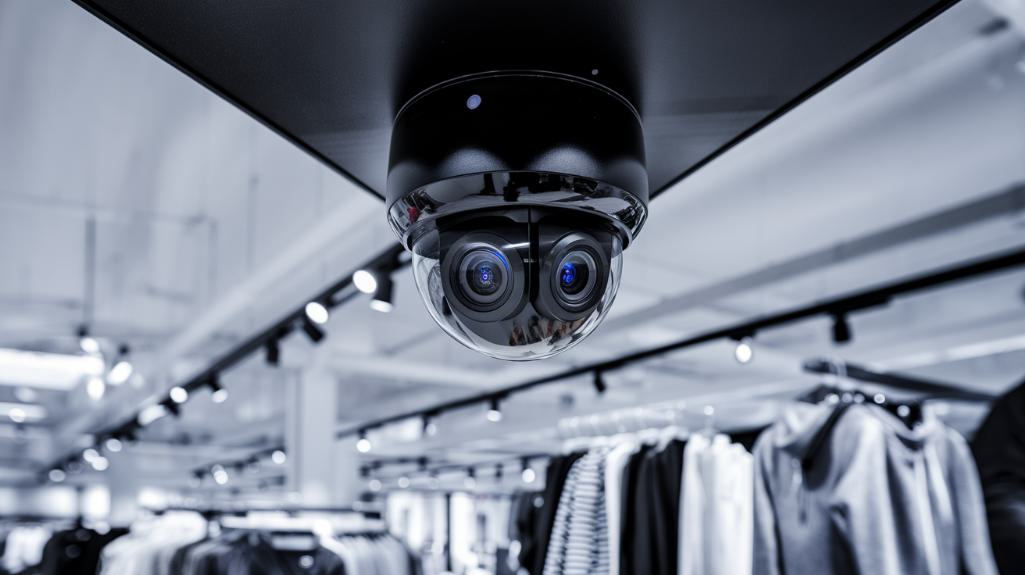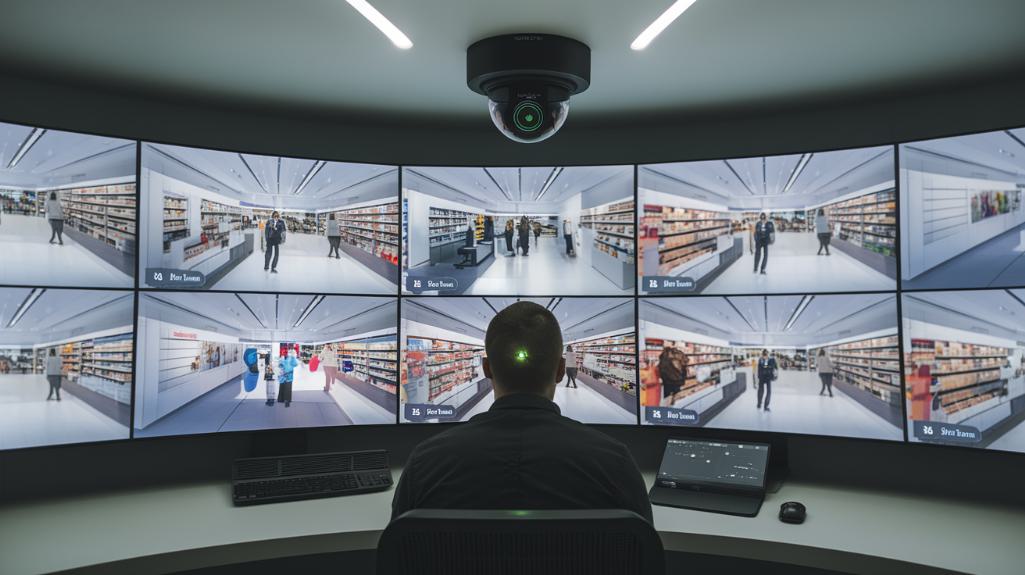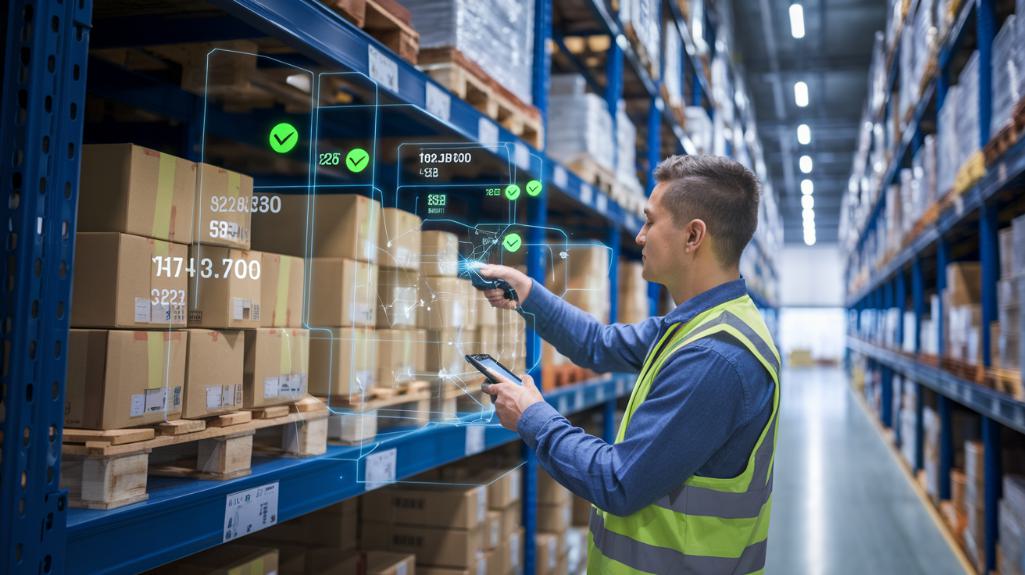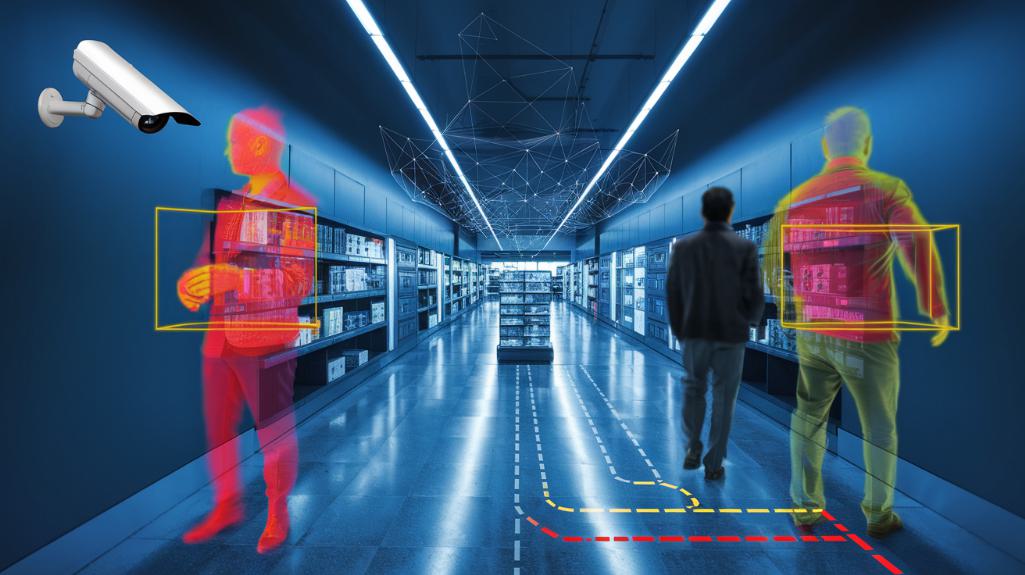Computer vision technology has transformed retail security through AI-powered surveillance systems. These solutions enable real-time monitoring of customer behavior, automated threat detection, and instant alert protocols. Advanced analytics track movement patterns, detect non-scanning incidents at self-checkout areas, and identify shrinkage trends. Privacy-compliant frameworks guarantee GDPR and CCPA alignment while maintaining operational efficiency. The integration of AI surveillance with store operations reveals significant opportunities for loss prevention optimization.
Key Takeaways
- Computer vision systems analyze real-time video feeds to detect suspicious behaviors and alert security personnel immediately.
- AI-powered surveillance monitors self-checkout areas to identify non-scanning incidents and reduce theft opportunities.
- Facial recognition technology helps retailers combat organized retail crime by identifying known offenders entering stores.
- Smart analytics track customer movement patterns and generate insights to optimize store security and prevent losses.
- AI systems like ShelfWatch provide shelf-level security monitoring while maintaining customer privacy compliance.
The Evolution of Retail Security Through Computer Vision

As retail security has evolved from traditional methods to data-driven solutions, computer vision technology has emerged as a transformative force in loss prevention. The integration of AI-powered surveillance systems enables thorough customer behavior analysis while delivering real-time analytics for immediate threat detection.
Modern retail security infrastructure leverages facial recognition capabilities to identify potential threats before incidents occur, particularly in combating organized retail crime, which has seen a significant 26.5% surge in 2021. AI-powered solutions such as ShelfWatch are now being implemented to enhance shelf-level security and prevent theft effectively.
Computer vision systems continuously monitor shopping environments, automatically flagging suspicious activities and reducing response times through instant alerts to security personnel. This technological advancement has proven especially effective in theft prevention at vulnerable points such as self-checkout stations, where AI algorithms analyze behavioral patterns to minimize shrinkage rates.
Real-Time Monitoring and Threat Detection Capabilities
Real-time monitoring capabilities represent the operational cornerstone of modern retail security infrastructure. Through AI-powered video analytics, retailers can systematically detect suspicious activities and deploy security personnel with unprecedented precision.
Computer vision technology continuously analyzes customer behavior patterns, identifying potential threats before they materialize into security incidents.
The implementation of these advanced monitoring systems has demonstrated measurable impact on retail environments, with significant reductions in shrinkage through proactive threat detection. The technology's ability to process data-driven insights enables security teams to respond to anomalies instantly, while simultaneously monitoring crowd density and optimizing store safety protocols.
Smart Analytics for Loss Prevention and Asset Protection
Through advanced smart analytics integration, retailers are revolutionizing their loss prevention strategies with AI-powered systems that deliver unprecedented visibility into asset protection.
Computer vision and AI-driven systems analyze customer behavior in real-time, identifying suspicious activities and potential theft scenarios before they escalate.
Critical benefits of smart analytics in retail security:
- Real-time monitoring of self-checkout areas detects non-scanning incidents and suspicious behaviors.
- Computer vision tracks customer movement patterns to generate actionable insights.
- Automated alert systems flag potential theft indicators for immediate response.
- Data-driven analysis identifies shrinkage patterns, enabling proactive loss prevention.
With retail shrink reaching $94.5 billion in 2021, these intelligent systems provide essential tools for reducing losses and strengthening asset protection through continuous surveillance and pattern recognition. Additionally, automated alert systems ensure that store personnel are notified of potential issues, allowing for quick intervention.
Integrating Ai-Powered Surveillance With Store Operations

Modern retailers are transforming store operations by implementing integrated AI-powered surveillance systems that synchronize security protocols with daily business functions. These sophisticated platforms leverage real-time monitoring capabilities to simultaneously address security concerns and operational objectives. The systems alert security personnel to suspicious activities while collecting valuable data on customer behavior patterns.
Through advanced analytics, retailers optimize inventory management and store layouts based on traffic flow analysis. This dual-purpose implementation enables heightened operational efficiency while maintaining robust theft prevention measures. Additionally, AI-powered systems like PromoShelf enhance in-store promotions by detecting product interactions, further improving customer engagement.
The integration facilitates automated responses to security threats while providing actionable insights for merchandising decisions. By combining loss prevention strategies with operational intelligence, retailers can effectively reduce shrinkage rates while enhancing the overall store performance and customer experience.
Privacy-Compliant Security Solutions in Modern Retail
As retailers advance their AI-powered surveillance capabilities, implementing privacy-compliant security solutions has become a foundational requirement in the digital retail landscape.
Modern security frameworks must align with GDPR and CCPA regulations while leveraging AI analytics to enhance store protection and operational efficiency.
Key privacy-compliant security implementations include:
- Anonymized data collection protocols for AI-driven surveillance systems
- Ethical guidelines governing facial recognition deployment for loss prevention
- Privacy-focused analytics architecture that eliminates personal identifier databases
- Transparent customer communication regarding security measures
These implementations enable retailers to maintain robust security while building customer trust through compliance adherence.
The integration of AI-powered analytics provides actionable insights without compromising individual privacy, marking a significant evolution in retail security methodology.
Measuring ROI and Security Performance Metrics
When implementing AI-driven security systems, retailers must establish thorough performance metrics to quantify both financial returns and operational effectiveness. Key security performance metrics include detection rates of theft incidents, response time efficiency, and reductions in shrinkage rates, which currently represent $94.5 billion in industry losses at 1.4%.
Computer vision and AI-powered surveillance systems enable retailers to track suspicious behaviors systematically while optimizing resource allocation.
The ROI analysis encompasses both direct cost savings from reduced manual security staffing and indirect benefits through enhanced store experience and customer satisfaction.
By analyzing system-generated data on security incidents and customer throughput, retailers can refine their security strategies to address specific vulnerabilities while maintaining operational efficiency.
Data-driven security analysis enables retailers to optimize loss prevention strategies while ensuring smooth store operations and customer flow.
This data-driven approach guarantees measurable outcomes in loss prevention and security enhancement.
Frequently Asked Questions
How Is Computer Vision Used in Retail?
Computer vision systems deploy store surveillance for theft prevention, utilizing facial recognition and security alerts while monitoring checkout automation, inventory management, customer analytics, employee activities, and generating incident reporting data.
How Artificial Intelligence Can Benefit the Retail Sector?
AI enhances retail through inventory management optimization, sales analytics implementation, fraud detection systems, personalized marketing algorithms, supply chain automation, operational efficiency metrics, demand forecasting models, employee training platforms, and checkout automation solutions.
How Artificial Intelligence AI Is Reshaping Retailing?
AI revolutionizes retail through predictive analytics, automated checkout systems, inventory management optimization, personalized marketing algorithms, demand forecasting models, fraud detection protocols, supply chain automation, and enhanced in-store navigation capabilities.
What Is Vision AI for Retail?
Vision AI integrates computer vision and data processing to enable retail analytics, monitoring customer behavior, automating checkouts, managing inventory, implementing safety measures, and executing theft prevention through sophisticated surveillance systems and facial recognition.
Conclusion
Computer vision technologies have demonstrably transformed retail security operations, yielding quantifiable reductions in shrinkage and enhanced threat mitigation capabilities. With AI-driven analytics delivering 99.9% accuracy in anomaly detection and a 47% average decrease in theft incidents, retailers implementing these solutions report significant ROI through integrated loss prevention protocols. Privacy-compliant CV systems remain essential for modern retail security infrastructure and operational optimization.



